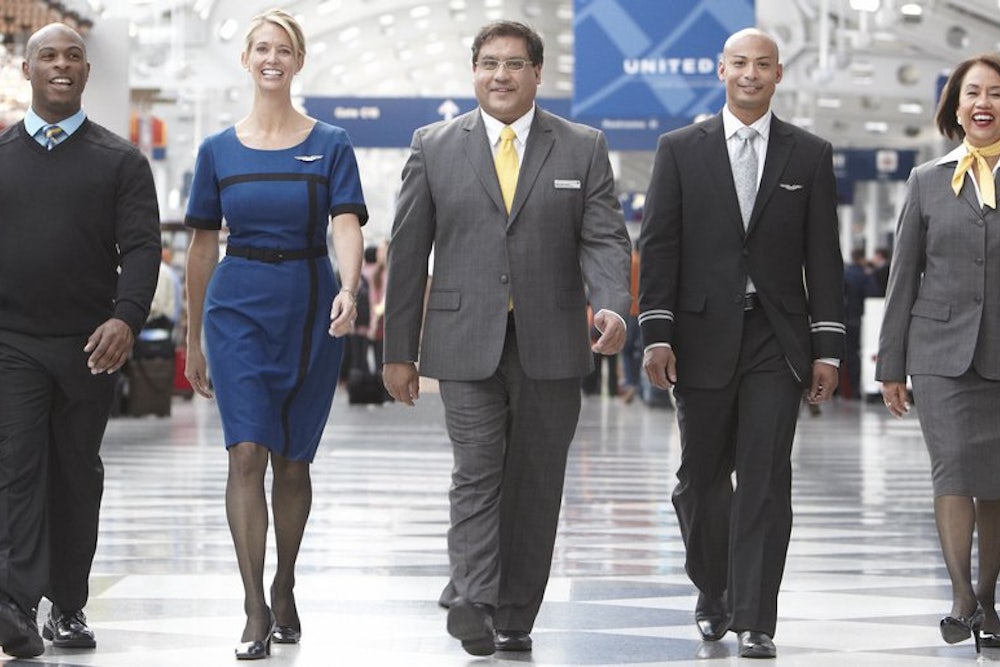To everything, there is a season. And whether you realize it or not, May was the de facto season for new airline staff uniforms.
If you somehow missed this phenomenon, here's what happened: Virgin Atlantic got things started on May 2, when it announced that it would soon have new flight attendant uniforms designed by famed British fashion icon Vivienne Westwood. United followed up a few weeks later with a runway-style unveiling of its new uniforms at the very fashionable Newark Liberty International Airport. Next came the inaugural uniform set from Air Canada's new spin-off carrier, Air Canada Rouge. Then Japan's All Nippon Airways got on the bandwagon, announcing that it would soon be dressing its staff in new uniforms. And the Norwegian Air Shuttle closed out the month by unveiling its new uniforms.
Was this all part of a coordinated, industry-wide effort? Did airline insiders spend the month of May traipsing from one fashion show to another, not unlike the scene at the couture showcases in Milan and Paris?
Alas, no. "It's just coincidence," says Karen Walker, editor-in-chief of the trade magazine Air Transport World. "There’s no uniform ‘season’ that I’m aware of."
Dang. But still: New airline uniforms! Exciting—until you realize that you can't remember what the old airline uniforms looked like.
Airline uniforms used to be more than just afterthoughts. Back in the day, airlines used their uniforms as selling points, although not always in the most reputable ways. In the 1960s, for example, the now-defunct carrier Braniff had its stewardesses remove several layers of their uniforms during each flight, a routine known as the "air strip." Over at Southwest Airlines, the unofficial motto in the 1970s was "Sex sells seats," a credo clearly reflected in the company's flight attendant uniforms. Other airlines took similar approaches.
Nowadays, of course, that would never fly (ahem). So what does an airline aim for these days when designing a new uniform? According to Virgin Atlantic founder Richard Branson, "We wanted to bring the glamour back to flying."
Good luck with that. The hunch here is that no amount of nostalgia or fashion acumen is going to make travelers feel glamorous when they're walking through a security scanner in their socks, or watching the person sitting next to them at the gate scarf down a jumbo Cinnabon with extra frosting, or scrunching into their seats and discovering they have even less legroom than last time.
Or is that too cynical? In an admittedly unscientific survey, One-Man Focus Group queried some acquaintances about their feelings regarding the new airline uniforms. The feedback shaped up like so:
• "I don't care what they wear, but it would be nice if they didn't lose my bag for a change."
• "They can wear baseball uniforms for all I care, as long as the flight arrives on time."
• "Wait, they have uniforms? Don't they just wear, like, nice office clothes with nametags?" (Indeed, that's exactly what the new United uniforms look like.)
Okay, chalk one up for cynicism after all. But these responses aren't just about people's understandably jaundiced views of air travel. They also reflect changes in how we perceive uniforms in general. A generation ago, the usher at a baseball stadium wore a crisp white shirt, a bow tie, and a policeman-style hat; the hotel bellhop wore an elaborately tailored uniform jacket, often with tails; and the mailman wore, well, a mailman's uniform. Nowadays the baseball usher wears a polo shirt and a baseball cap, the bellhop outfit feels like a ridiculous anachronism, and postal employees have grown so jaded that they often can't be bothered to tuck in their uniform shirts.
Part of this, of course, is just the casual Friday-ization of America. But it also speaks to the decline of something we once took for granted: the uniformed service class. Train conductors, apartment building doormen, service station attendants, even delivery boys—these people used to be part of the fabric of our civic culture. There was little prestige, excitement, or reward in their jobs, but their uniforms gave them an air of authority and dignity as they worked to achieve their share of the American dream.
Nowadays, we know the American dream is a broken promise and that the dignity conferred by a service uniform is largely an empty shell. And thanks to the outsourcing of America's manufacturing sector, we're all service employees now (or else we're one round of layoffs away from that status), whether we're working at Applebee's, Walmart, or Office Max. What's the point of wearing that uniform proudly if your only chance of advancement is to another dead-end corporate service job?
All of which brings us back to the airlines and their new uniforms. Will anyone even notice them? Probably not. Fortunately, you can relive the bygone days of airline fashion on this endearingly obsessive website, which documents the airline uniforms of the past, most of which were more interesting than the ones that were unveiled last month. Should be just the thing to distract you from the sight of that guy scarfing down the Cinnabon.
Do you know of a new product, service, design, or phenomenon that deserves a closer look? Send tips, samples, press releases, and best intentions here, and follow One-Man Focus Group on Twitter.
Paul Lukas specializes in writing about small, overlooked details. His media projects include Uni Watch, which covers the world of sports uniforms and logos; Permanent Record, which is about the stories behind found objects; Show and Tell, which is just like you remember it from second grade.
